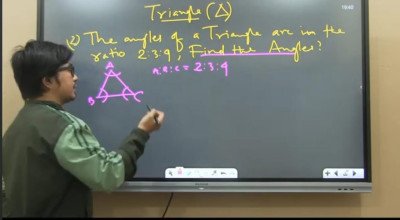PROBABILITY - CLASS 10
Probability means possibility. It is a branch of mathematics that deals with the occurrence of a random event. The value is expressed from zero to one. Probability has been introduced in Maths to predict how likely events are to happen. সম্ভাবনা মানে সম্ভাবনা। এটি গণিতের একটি শাখা যা একটি এলোমেলো ঘটনার সংঘটন নিয়ে কাজ করে। মান শূন্য থেকে এক প্রকাশ করা হয়। ঘটনা ঘটার সম্ভাবনা কতটা ভবিষ্যদ্বাণী করার জন্য গণিতে সম্ভাব্যতা চালু করা হয়েছে।
English
Last updated
Wed, 27-Nov-2024



















